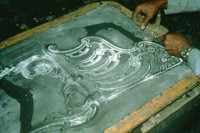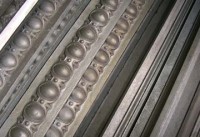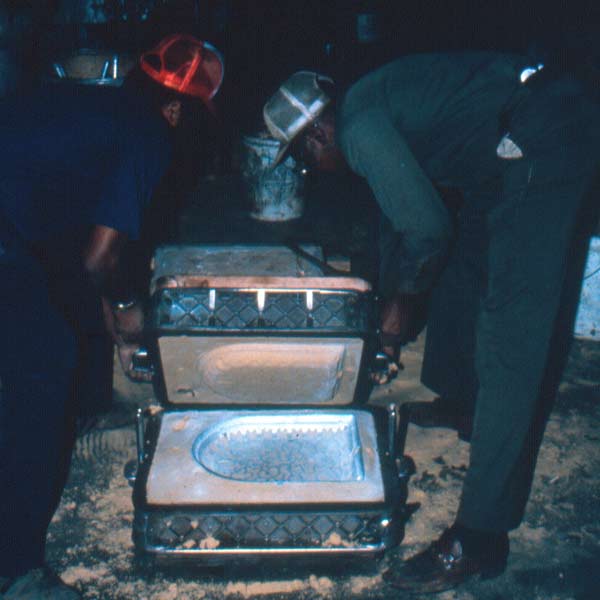

Robinson Iron casts in molds made from sand. With this time tested technique, numerous castings may be made utilizing a single original or pattern. The resulting castings have a sand texture on their surface imparted by the molding process. Our molding sand has a minimum AFS 70 grain fineness on a 3 screen distribution. This means that the grains of sand are uniformly sized as they fall through three separate screens of the same fine mesh.
Class 30 Gray Iron ASTM A48 is the alloy of choice for architectural Iron. Iron’s crystalline structure reacts extremely well under compression but tends to shatter under stress from sudden lateral loads or tension. For applications where a casting needs to have more tensile strength, Ductile Iron – Alloy 65-45-12, is sometimes specified. The introduction of magnesium into the metal during the smelting creates graphite spheroids which gives this alloy added resilience. All metal castings should be free of typical foundry defects such as porosity, cold shuts and warpage.
Aluminum alloys are numerous depending upon the desired strength, formability and colors obtainable through anodization. Casting Alloy 319 ASTM B221 is most commonly specified by Robinson Iron.
Brass and Bronze are both copper based alloys. Coveted for their “golden” appearance they have been alloyed with zinc and other metals to produce a variety of colors as well as strengths. Casting Alloy #12A Silicon Bronze ASTM B198 is most commonly specified by Robinson Iron.
When the original is removed from the sand mold, a void is formed into which the molten metal is poured.
The texture from the sand mold is left on the surface of the castings.

